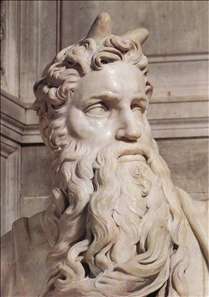Ramses II usually gets the nod as the Exodus pharaoh because of several Biblical scriptures stating that Israel sojourned in Egypt for 430 years. But this idea never seemed right to me. Why do we never hear about such a big event in Egyptian history? And why (my husband always asked) didn’t Ramses die in the tenth plague when firstborn sons were killed?
Then one day I read Galatians 3:16-17 which specifies 430 years from the Covenant (before Abraham went to Egypt) to the Law (at the time of the Exodus). That’s more than 200 years different than if you count 430 years from when Joseph went to Egypt. Based on those numbers, I knew the Exodus was during Egypt’s 18th dynasty—the dynasty that drove out the Hyksos pharaohs of Joseph's day. The 18th dynasty not only “knew not Joseph,” but hated him and his associates. I couldn’t pinpoint a specific pharaoh though, because there are so many discrepancies with the dates.
That’s where I left it, but I shared my conclusions with my friend Heidi and she discovered more when she was studying Egypt with her family. Heidi determined that Hatshepsut must have been the pharaoh’s daughter who adopted Moses, and that Thutmoses III was the pharaoh of the Exodus. I’m sure she’s right, and here’s why:

Hatshepsut—a.k.a. “His Majesty herself”—is known as the female pharaoh who locked her young stepson away with the priests while she (who was supposed to rule as his regent) seized power and ruled for 21 years. I hadn’t thought about it before, but it would take a woman with such chutzpah to adopt a Hebrew baby at a time when Egypt was killing all the Hebrew boys. Hatshepsut never had a biological son (only two daughters), but she named her adopted son Moses after her father, mighty Thutmoses I. It makes perfect sense that she was preparing Moses to rule next.
But then Moses left (to Midian). A short time later Thutmoses II (successor to Thutmoses I and husband of Hatshepsut) died. That left Thutmoses III—son of a harem wife and practically a commoner himself—as Pharaoh. Hatshepsut’s young daughter married this half brother, and Hatshepsut was Dowager Queen and regent—for awhile. But she wanted more. Perhaps she was hoping and waiting for Moses’ return. In a bloodless coup d’etat, she seized all power and proclaimed herself Pharaoh of the Two Lands.
By the time Moses did return 40 years later, Hatshepsut was dead. Thutmoses III had been sole Pharaoh for many years and had created a huge empire: setting out every spring to quash rebellions and to conquer new lands. In spite of his might, however, he certainly felt threatened by Moses who was the true heir. Thutmoses III blustered and bullied to hide his insecurity. But it took the tenth plague—where his own firstborn son died and Thutmoses III didn’t—to prove he was an imposter and to shatter his pride. And then the Israelites were gone.
Thutmoses III had no more conquests following the Exodus; after 17 years of empire building, he stayed home. He had to, since his army was at the bottom of the Red Sea. He did, however, have a big temper tantrum and demolished all of the shrines and monuments which Hatshepsut had built. (Many of these had pictures of Hatshepsut with a little boy.) After a long reign, Thutmoses III was followed on the throne by Amenhotep II—his second son.


Now that's a history lesson! It's intriguing.
ReplyDelete